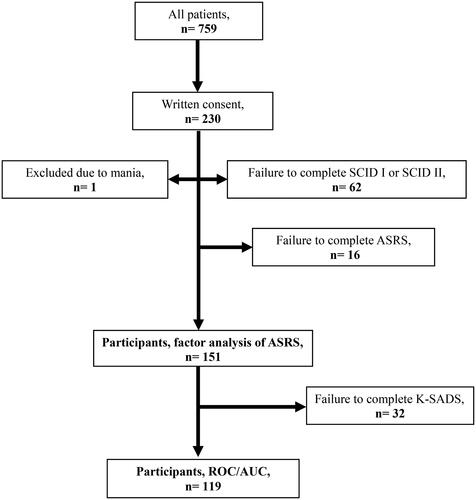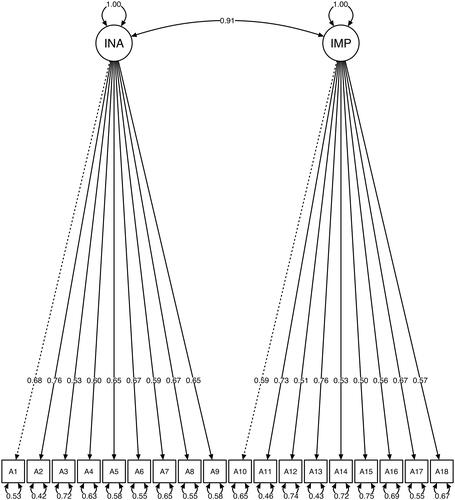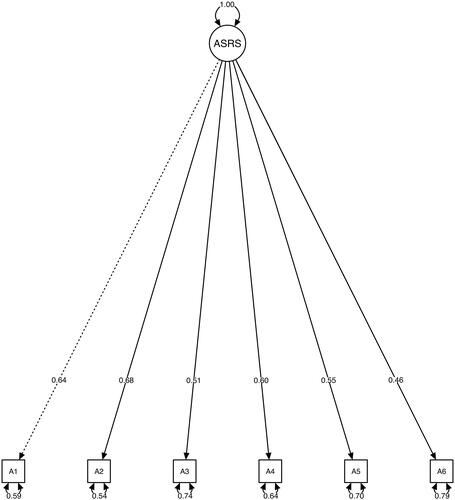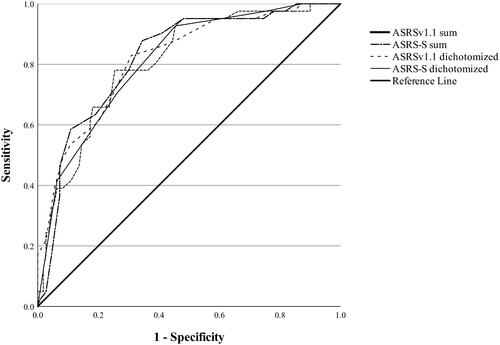Figures & data
Figure 1. Flow chart of the recruitment process, starting with all patients from one out-patient clinic diagnosed with either ADHD, and/or BPD, and/or BD.

Table 1. Descriptive data of participating psychiatric patients (n = 151) diagnosed with ADHDTable Footnotea, and/or BDTable Footnoteb and/or BPDTable Footnotec.
Figure 2. Confirmatory factor analysis for ASRSv1.1, with two factors, Inattention (INA) and Impulsivity (IMP). Standardised factor loadings for all latent variables.

Figure 3. Confirmatory factor analysis for ASRS-S. Standardised factor loadings for all latent variables.

Figure 4. Receiver operating characteristic (ROC) analysis of the ASRSv1.1 and the ASRS-S, non-dichotomised and dichotomised scoring.

Table 2. ASRSv1.1 Non-dichotomised total points (0–72) and dichotomised points (0–18), ASRS-S non-dichotomised points (0–24) and dichotomised points (0–6), sensitivity, specificity, PPV and NPV for selected cut-off scores (optimal cut-off score marked in bold).
Supplemental Material
Download MS Word (215.4 KB)Data availability statement
The data that support the findings of this study are available on reasonable request from the corresponding author. The data are not publicly available due to ethical restrictions, as they contain information that could compromise the privacy of research participants.
